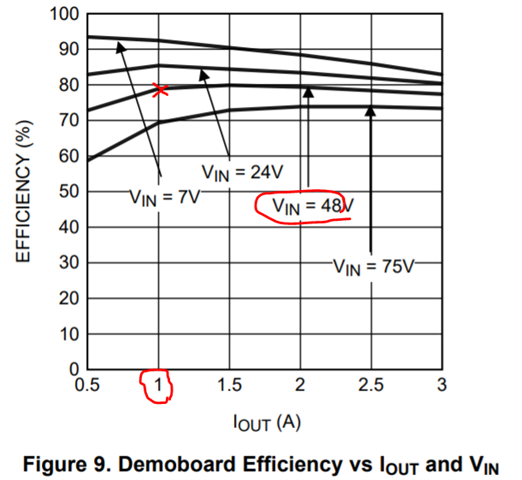Hello,
My customer is trying to estimate the approximate thermal performance of LM5576. The operating conditions is as below :
input 48V
ouput 28V/0.98A
27.36W(0.98A)
I have two questions regarding this.
1) Per fig. 9 in datasheet, the approximate efficiency would be 79%. Then,
Total loss : 27.36 * 21% = 5.74W
Inductor loss : DCR * 0.98A * 0.98A = 0.096 W
Diode loss : Vf * 0.98A = 0.48W
IC loss : 5.74W - 0.096W - 0.48W = 5.164W
Looks IC loss is too large. Can you check if the estimation above is valid?

2) I ran a Webench simulation and noticed that the efficiency is 96.8% and the total loss is only 0.89W. Can you let me know how this discrepancy between the simulation and datasheet comes and which value is correct?
WBDesign_LM5576_48Vto28V@0.98A..pdf
Thank you!


